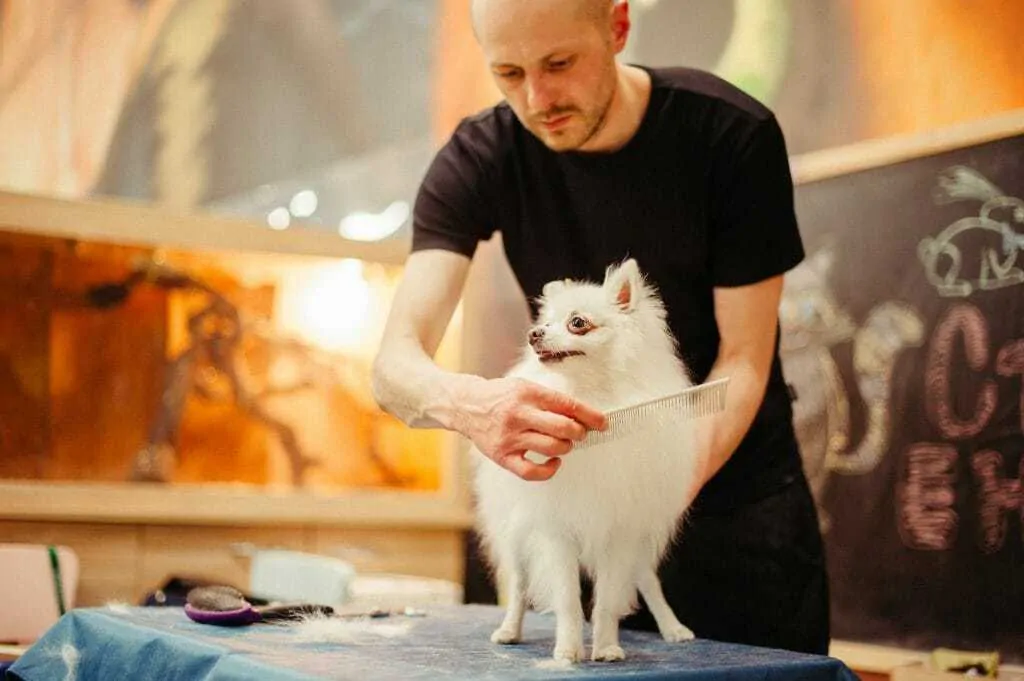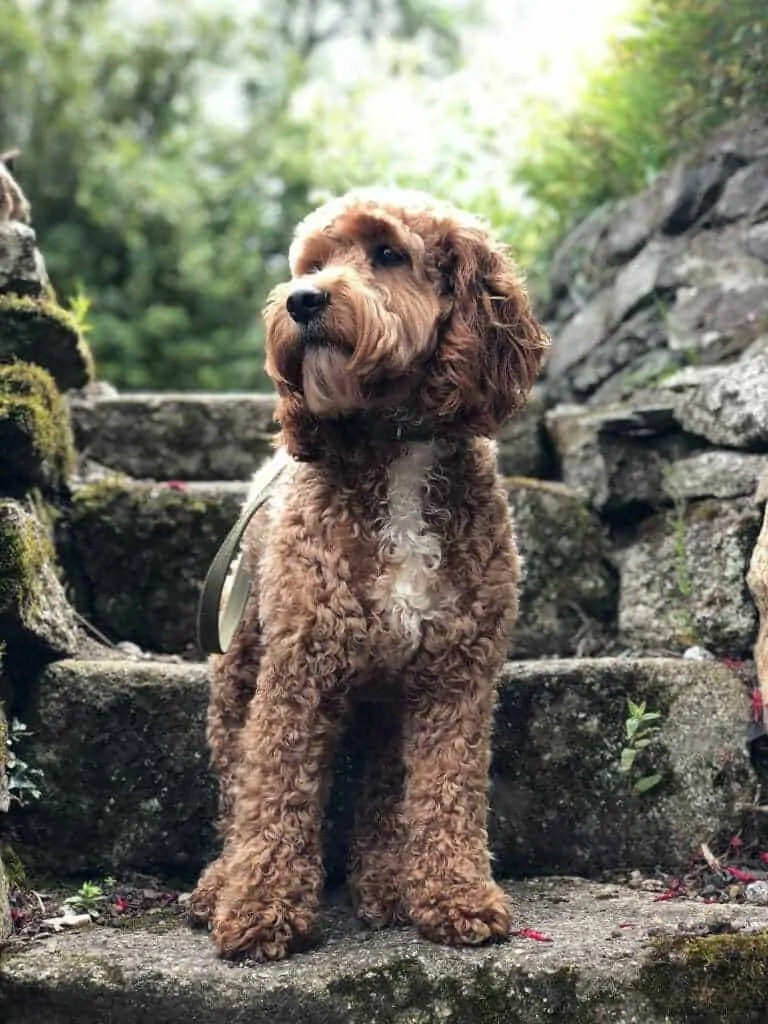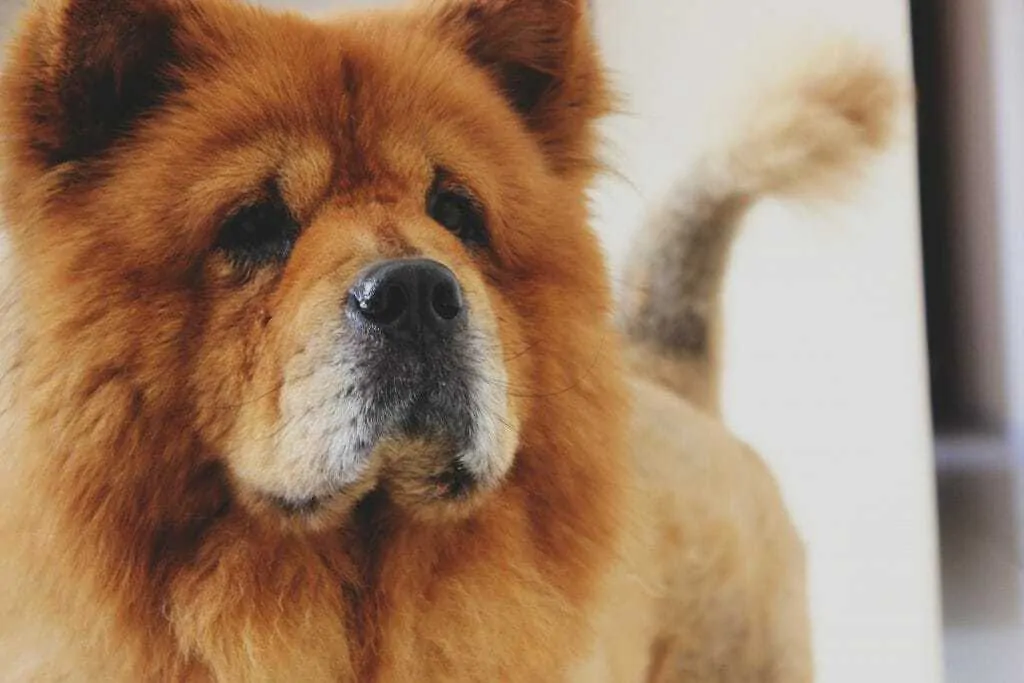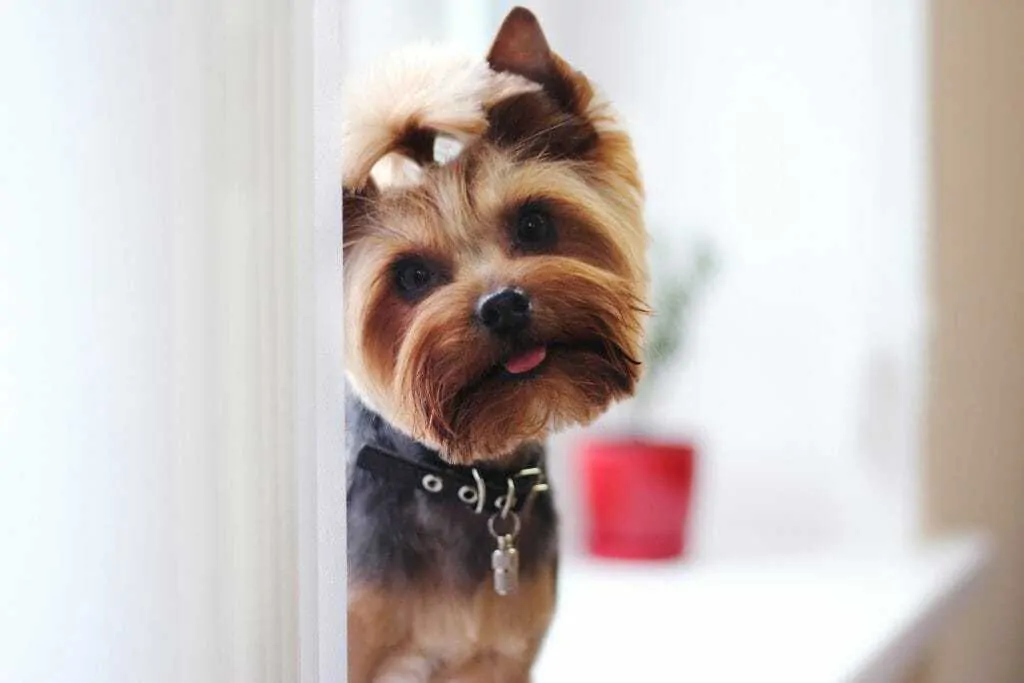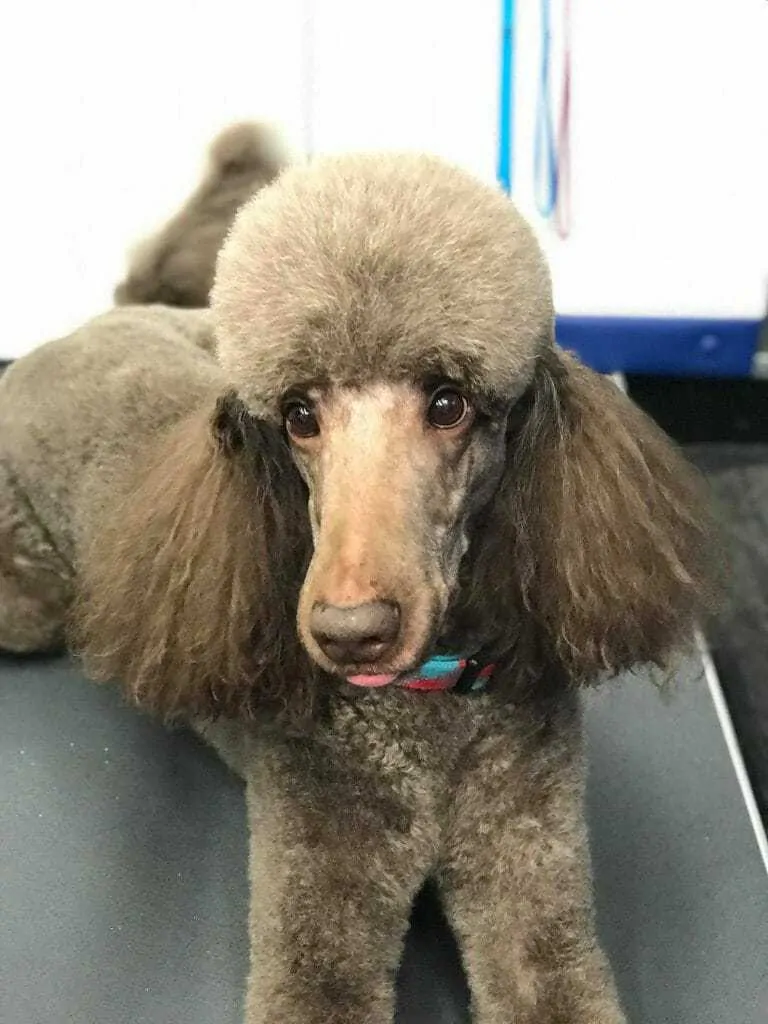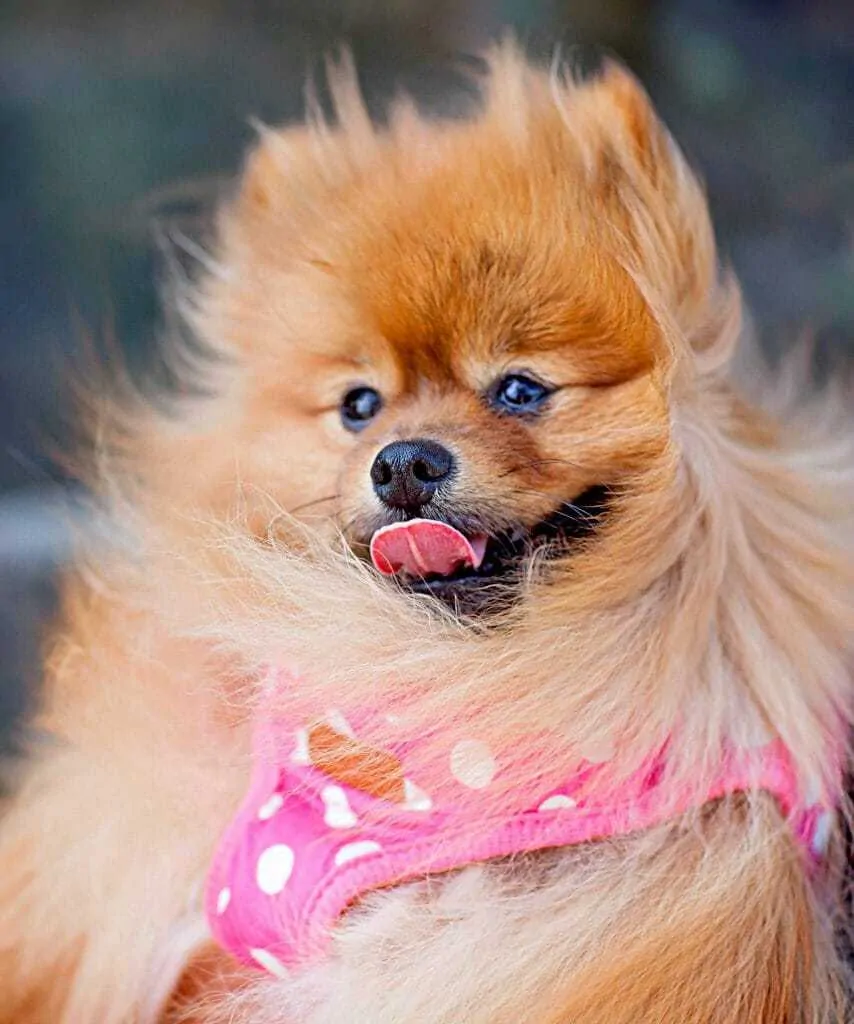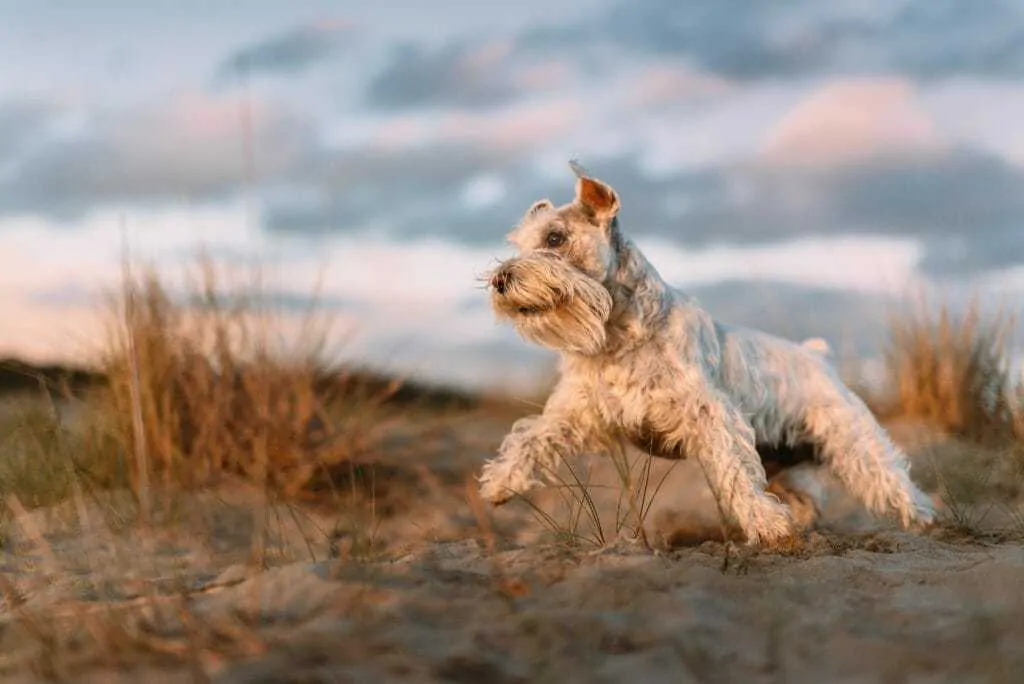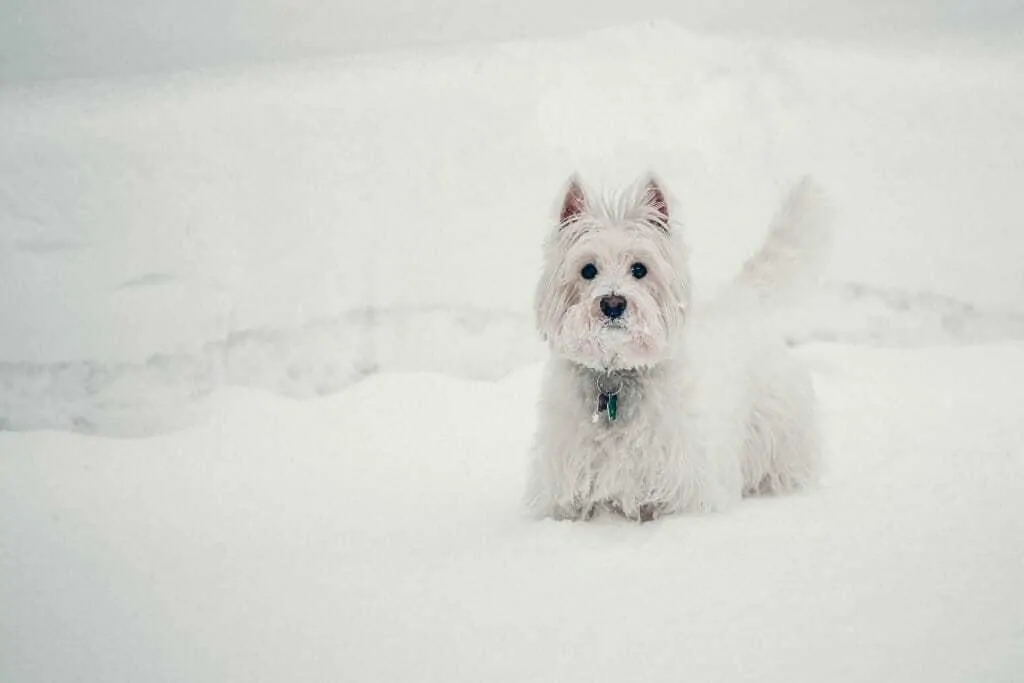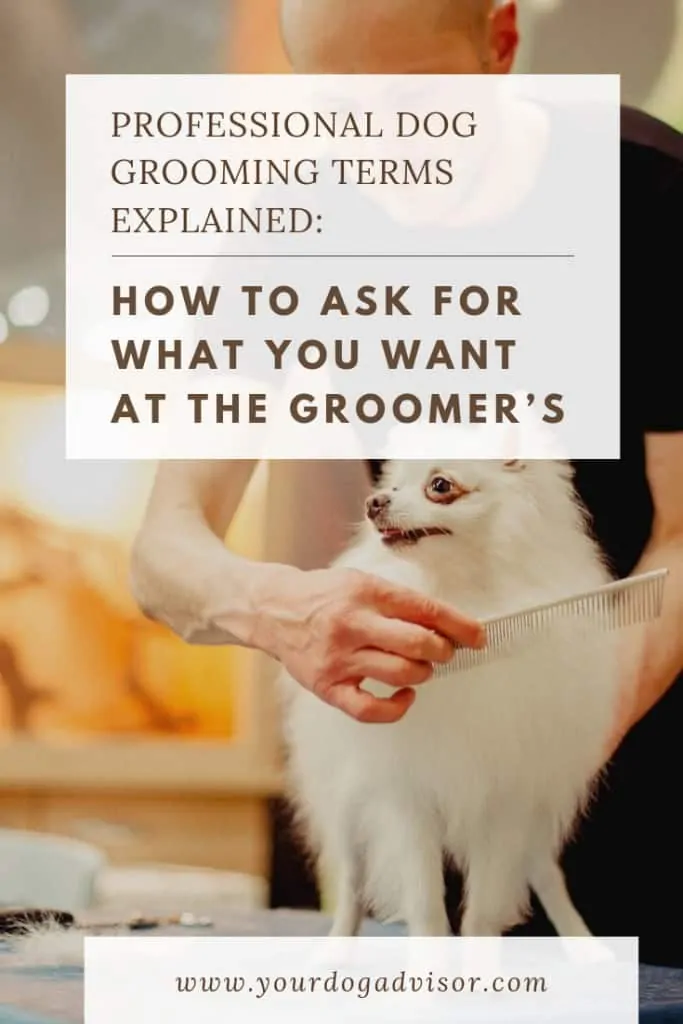Visiting the groomer can be a stressful experience for everyone. While your pet undoubtedly has a list of its own anxieties about visiting the groomer, you, as the owner, may have your own set of worries. There’s nothing worse, for the groomer or the pet parent, than when the outcome of your pet’s groom doesn’t match watch you had in mind when you dropped off your furry friend.
Of course, once the hair is cut, it can’t be put back on! So for your sake, for your groomer’s sake, and for your pet’s sake, we’ve compiled a list of explanations of common professional grooming terms for you so that hopefully you’ll get exactly what you’re expecting next time you take your pup in for a haircut.
Groomer combing a white pomeranian
Contents
Puppy Cut
“Puppy cut” is probably the most commonly misunderstood grooming term. “Puppy cut” does not indicate a complete style. It’s just a general term for “one length all over”. Usually the hair is left at least half an inch (1.27 cm) long, but there is not a standard length for puppy cuts so you’ll need to be specific about how long you want your dog’s hair to be left.
Curly coated dog in a puppy cut with a teddy bear face and round feet
Kennel Cut
“Kennel cut” refers to a short length all over, usually less than a half inch, but again, you’ll need to be specific about the exact length in order to get exactly what you’ve envisioned.
Lamb Cut or Swim Cut
A “lamb cut”, alternatively referred to as a “swim cut”, is when the hair on the dog’s body is cut short, but the legs are left longer and neatly scissored. You’ll need to be specific about which lengths you’d like the body hair and leg hair left.
Lion Cut
For dogs, the “lion cut” involves a shorter length on the back part of the dog’s body and a fuller mane left around the head and shoulders, just like a male lion’s hair grows naturally. Depending on your preference, the front legs may be included in the hair left longer or the groomer can cut the hair so that it comes to a point on the dog’s chest, with the front legs the same length as the back end of the dog. Typically with a lion cut, the majority of the tail is cut short to match the back of the body, with a poof left on the end of the tail.
Chow Chow in a lion cut
Skirt
A dog’s “skirt” is the long hair that hangs between a dog’s front and back legs.
Feathers
A dog’s “feathers” refer to the long hair on the backs of the legs, and are specific to certain breeds, such as English Cocker Spaniels, Golden Retrievers, Cavalier King Charles Spaniels, and others.
Teddy Bear Face
A”teddy bear face” is a rounded face, sometimes referred to simply as a “round face”, with the hair in front of the eyes cleared. It is the most common cut for faces of Shih Tzu, Pomeranians, Malteses, and many other breeds.
Yorkie with a teddy bear face, tipped ears, and a topknot
Clean Face
“Clean face” is when the face, muzzle, and cheeks are shaved very close (think of the typical poodle face).
Tipped Ears
“Tipped ears” are when the tips of the ears are shaved, but the rest is left long. Practically speaking, tipped ears reduces the weight of hair on the ears, making it easier for them to stand up. Tipped ears are most commonly found on Yorkies and West Highland Terriers.
Topknot
“Topknot” can mean a couple different things, but basically it refers to the hair on top of your dog’s head. For poodles, the topknot is typically trimmed into a round shape. Other breeds, such as Yorkies and Shih Tzu, usually have their topknots pulled into a ponytail.
Standard poodle with typical poodle topknot and clean face
Pigtails
“Pigtails” are when the topknot is divided into two equal ponytails, usually accompanied by two bows.
Pom Poms
“Pom poms” refer to rounded balls cut into the dog’s hair, typically at the bottom of the legs, just above the feet. Pom poms require a very specific type of hair to keep their rounded shape, usually only found in dogs with thick, curly hair, like poodles and Bichon Frises. Similarly, a “pom tail” is a tail with a shaved base and a ball on the end.
Carrot Tail
A “carrot tail” is a tail that has been shaved on top to match the length of the body, with the hair on the sides and bottom of the tail scissored into a carrot shape.
Flag tail
A “flag tail” is a tail that has been cut into a pennant shape, with the hair shortest near the tip of the tail and longest near the base so that the hair does not drag the ground as the pet walks.
Blow Out
A “blow out” involves the use of shedding tools and a high velocity dryer to blow out excess hair, great for reducing shedding in breeds such as Huskies, Pomeranians, and German Shepherds.
It is a much better alternative to shaving double coated dogs, as there is no risk of damaging the coat. Blow outs can also help keep your heavy coated pet cooler in summer time and prevent mats in dogs who have thick, long hair that sheds excessively.
Pomeranian with hair blowing in the wind
Sanitary Cut
A “sanitary cut” refers to shaving the hair around the anus and sexual organs. It is a very important part of grooming, and even if you elect to let your dog’s coat grow to full length, you should have a sanitary cut performed regularly to prevent rashes, infections, and other issues.
Clean Feet
“Clean feet” refers to the feet being shaved very close, even between the toes (again, think typical poodle feet).
Round Feet
“Round feet” is exactly what it sounds like-when your dog’s groomer trims around the feet so that they are neatly rounded.
Beveled Feet
“Beveled feet” are rounded, but the difference between round feet and beveled feet is that with beveled feet the hair on top of the foot is left longer so that the entirety of the leg and foot look like one column that is rounded at the bottom, as opposed to the foot being defined as separate from the leg. Beveled feet are common in breeds like Bichon Frises and American Cocker Spaniels.
Breed Standard Cuts
There are a variety of breed-standard cuts, but please note that there is no such thing as a “Shih Tzu cut”, “Maltese cut”, “Yorkie cut” or “poodle cut”. Breed standard cuts are typically determined by the AKC or other established breeding organizations, and the breed standards for Shih Tzu, Malteses, and Yorkies, as well as others, are to allow the coat to grow to full length and avoid excessive trimming. What you’re probably thinking of is a puppy cut (see above). Poodles, on the other hand, have a huge range of haircut options, but there is no standard “poodle cut”.
Some popular breed standard cuts include:
-
Schnauzer Cut
Schnauzer in a Schnauzer cut
The standard Schnauzer cut features a shaved tail, back and sides, with longer hair on the legs and an angled skirt. The top of the head, sides of the face, and ears are shaved, leaving distinct eyebrows and a beard. The beard is typically left long and natural, but can be trimmed shorter or rounder on request.
-
Cocker Spaniel Cut
The Cocker Spaniel cut includes a short back, with a full skirt and legs. The Cocker Spaniel muzzle and cheeks should be cut short as well, with a bit extra left on top of the head, referred to as the “crown”. The top ⅓ of the Cocker Spaniel’s distinguishing ears should be shaved, with the rest left long and rounded at the bottom.
-
West Highland Terrier Cut
The body of West Highland Terriers or “Westies” is cut similarly to the Cocker Spaniel’s, but the head and tail are different. The Westie cut calls for a full, rounded head with tipped ears and a carrot tail.
West Highland Terrier sporting a breed standard Westie cut
-
Scottish Terrier Cut
Scottish Terriers or “Scotties” have a haircut that is a combination of the cuts for Westies, Schnauzers, and Cocker Spaniels. Their body, skirt, and legs are cut like a Cocker Spaniel, with a short back and full legs and skirt. Like Westies, they have carrot tails, and their heads are cut very similarly to a Schnauzer, with the exception of the ears, which have tufts of hair left in front instead of being shaved completely.
Some Helpful Tips
- Typically, the blade numbers used by groomers are different from those used by human hairdressers. With grooming, the larger the blade number, the shorter the hair will be. To avoid confusion, try to give your groomer a length to leave the hair instead of a blade number.
- If the cut you have in mind for your pup is very specific, feel free to bring in a photo for the groomer. This is a great way to avoid miscommunication.
- Keep in mind that the thickness and texture of your dog’s hair, as well as your dog’s bone structure, will have an effect on the final outcome.
Hopefully this list of professional grooming term explanations has helped clear up some of your questions about what to ask for the next time you take your pet in for a groom. If you’re ever in doubt about something, don’t hesitate to ask your groomer, who will be more than happy to answer any questions you may have!

Jen Jones is a professional dog trainer and behavior specialist with more than 25 years of experience. As the founder of ‘Your Dog Advisor’ and the ‘Canine Connection’ rehabilitation center, she applies a holistic, empathetic approach, aiming to address root causes rather than merely treating symptoms.
Well known for her intuitive and compassionate approach, Jen adopts scientifically-proven, reward-based methods, encouraging positive reinforcement over punishment. Jen specializes in obedience training, behavior modification, and puppy socialization. Her innovative methods, particularly in addressing anxiety and aggression issues, have been widely recognized. Jen has worked with many of the world’s leading dog behaviorists and in her free time volunteers with local animal shelters and rescue groups.
